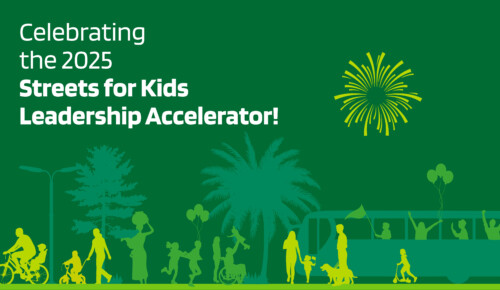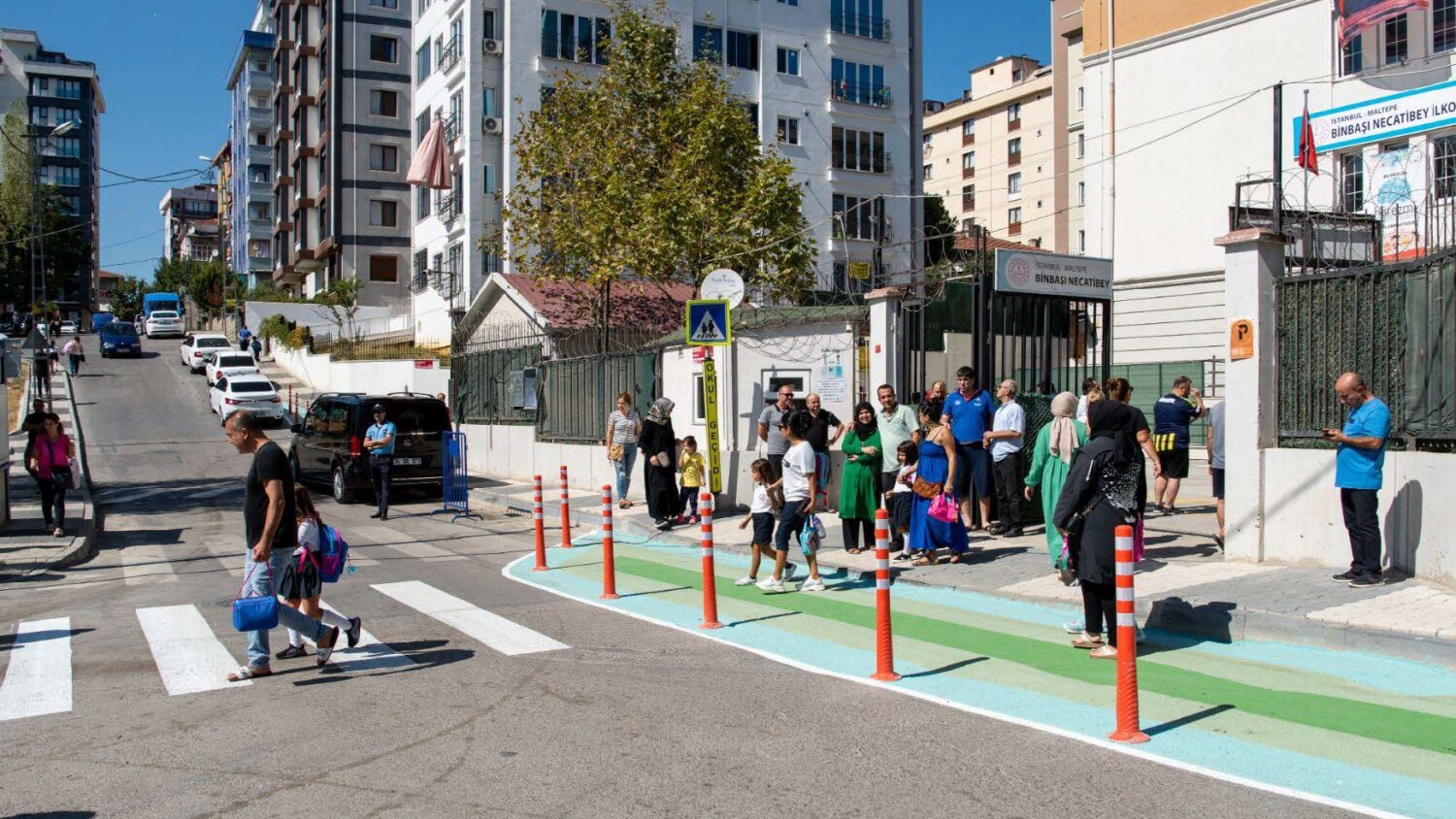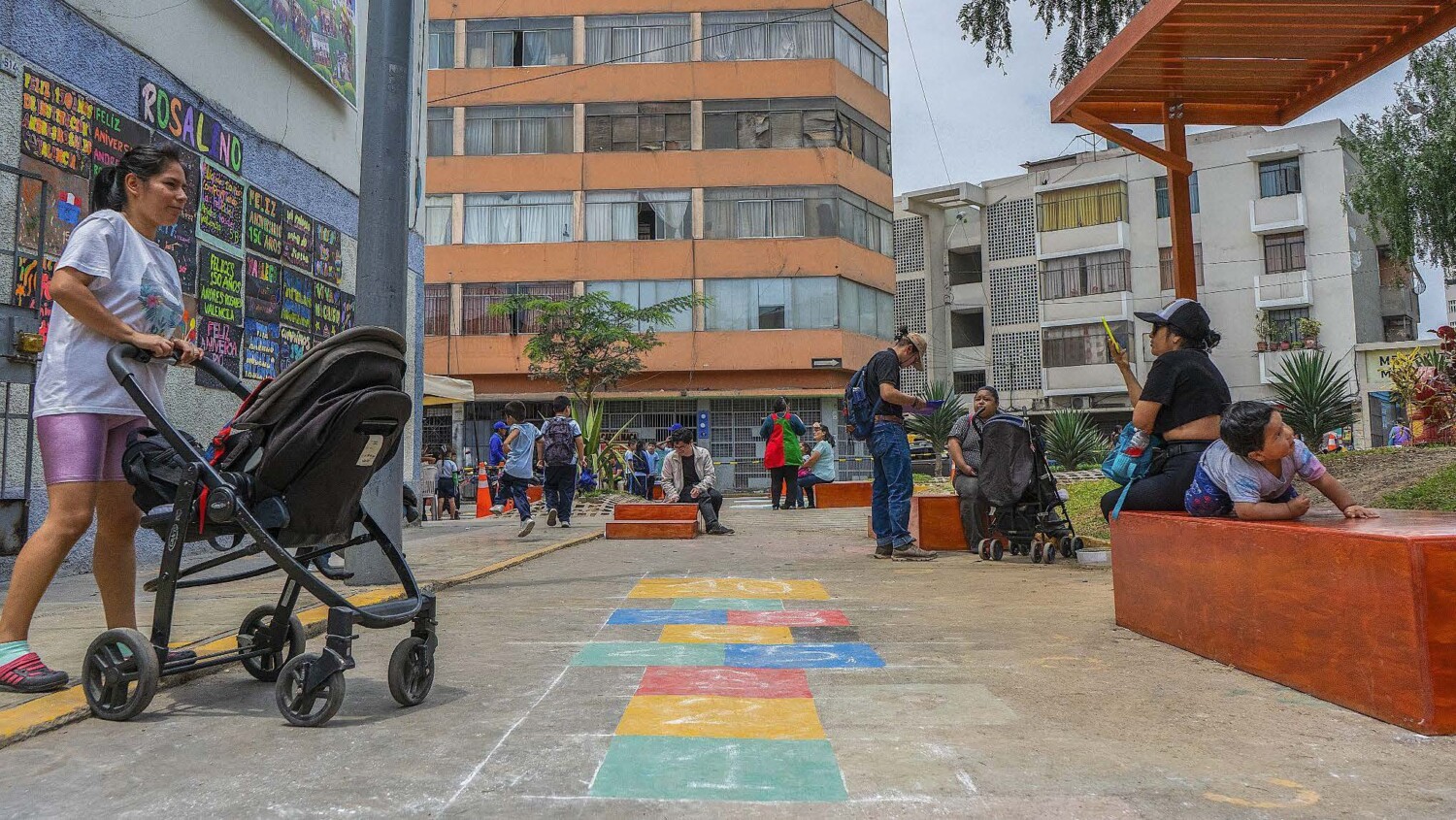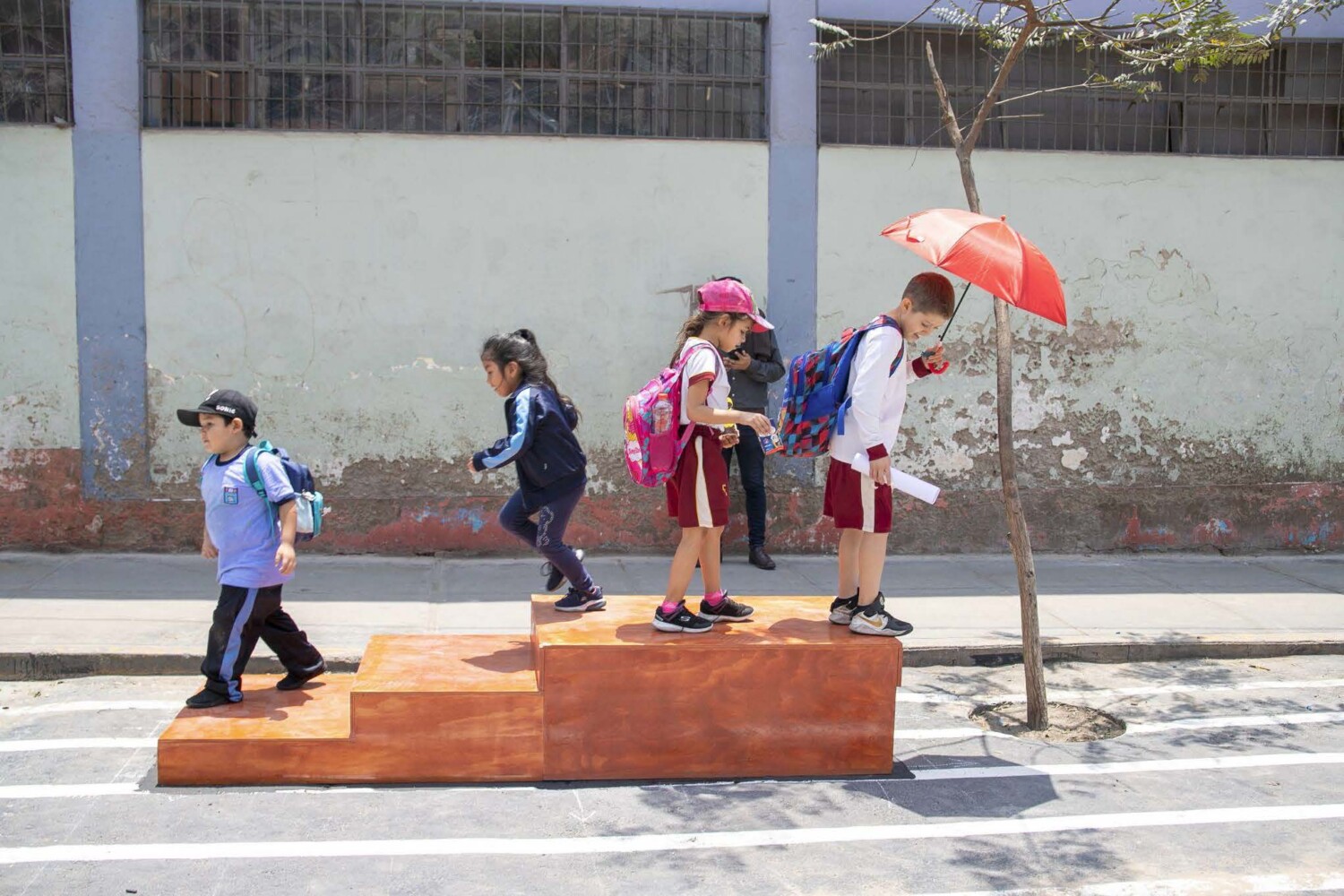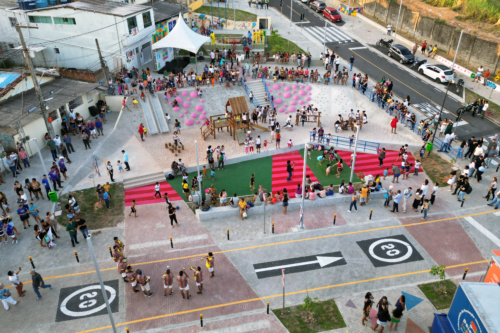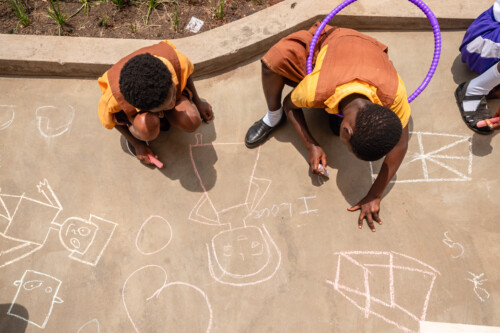GDCI’s Streets for Kids program implemented several street transformation projects in 2023 to show how street design can be an effective, relatively quick, and low-cost solution to many challenges facing children and youth in cities.
Nearly a third of the four billion people living in urban areas today are children. By 2050, almost 70% of the world’s children will live in cities. More than 90% of children under the age of 15 years are severely inhibiting their development and negatively impacting their health by breathing polluted air daily, physical inactivity is common among over 80% of adolescents, and road traffic crashes are the leading cause of death for young people aged 5-29 globally.
Designing urban environments for children and their caregivers means designing ideal environments for the entire community. By simply creating public spaces and streets that encourage a balanced mix of users, fatalities and serious injuries from traffic crashes are reduced, and neighborhoods make playing, walking, and cycling more attractive, and foster greater social interaction.
Using the award-winning Designing Streets for Kids guide, the DIY reverse periscope, and various community engagement tools and methodologies, the projects worked with municipalities, transport and urban mobility departments, local NGOs and practitioners, schools, community associations, and students to create safe, attractive, and culturally relevant spaces and streets in diverse contexts.
The Municipality of Maltepe on the Asian side of Istanbul worked with implementing partner Superpool to reclaim an estimated 700 m2 for pedestrians including children and caregivers, directly benefiting 450 school children (aged 6-9) and 73 kindergarten-aged children. Extended sidewalks, pedestrian crossings, and chicanes were implemented to reduce vehicles speeding in the area and create more pedestrian and play space where cars were once parked.
The city now plans to make this transformation permanent.
Impact:
- 55% reduction in motor vehicles exceeding the speed limit
- 15% increase in pedestrian volumes
- 49% increase in people using the transformed public space
- 89% of children now using protected infrastructure on Ayhan Street (compared to none before)
The Municipality of León partnered with Colectivo Tomate to create an interim street transformation pilot that benefited nearly 1000 children. Design elements to encourage children to use the space safely includes colorful extended pavements with flexible benches that double as play elements, planters, pedestrian crosswalks, and clear traffic signage enforcing a 20mph (30km/h) speed limit to slow down vehicles outside the school.
The project’s success is spurring plans for a second street transformation.
Impact:
- Reclaimed 450 m2 of public space
- 82% reduction in motor vehicles exceeding 30 km/h
- 24% increase in pedestrian volumes
- 74% of caregivers now feel the street is safe for their child to play compared to 1% prior to the intervention
- 89% of those surveyed would like to see similar street transformations in the city
The Municipality of Lima and its urban mobility department pedestrianized a street outside Andres Rosales Valencia school, located on a busy, vehicle-heavy, five-way intersection.
Through interactive design workshops, the process engaged 470 children and over 50 community members to gain insights into their needs, leading to a safer, more comfortable, and attractive space, and directly benefiting 322 students and their caregivers.
Impact:
- Reclaimed 850 m2 of pedestrian space to safeguard students’ access to school
- 42% reduction in motor vehicles exceeding the speed limit
- 107% increase in caregivers’ feeling of safety, and a significant increase in caregivers’ likelihood of playing with their kids on the street
- Noise on Moquegua Street was reduced by 95%
The city is now working to make the transformation permanent, proposing Moquegua Street be included in the historic center’s pedestrian network plan to enable capital or permanent change.
The Streets for Kids program continues to work with the cities to ensure these projects scale up and become permanent, and we’re incredibly proud to be part of the process and work alongside all the partners and cities to show how streets can be reimagined as public spaces and make neighborhoods safer for kids, anywhere in the world.
To see how your city can do the same, download the free Designing Streets for Kids guide available in Albanian, Bahasa Malaysia, English, French, Georgian, Portuguese, Spanish, Turkish, and Vietnamese.
